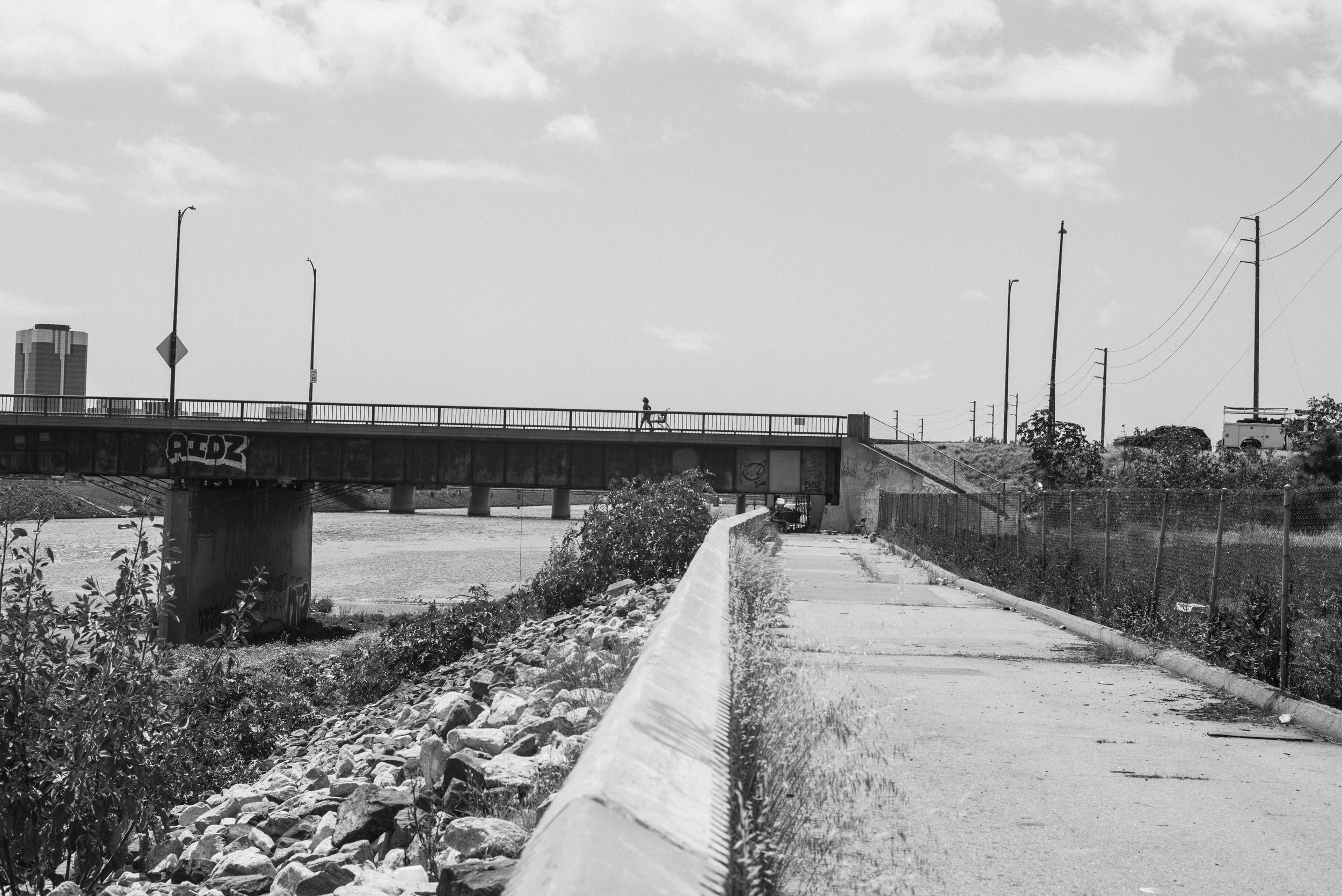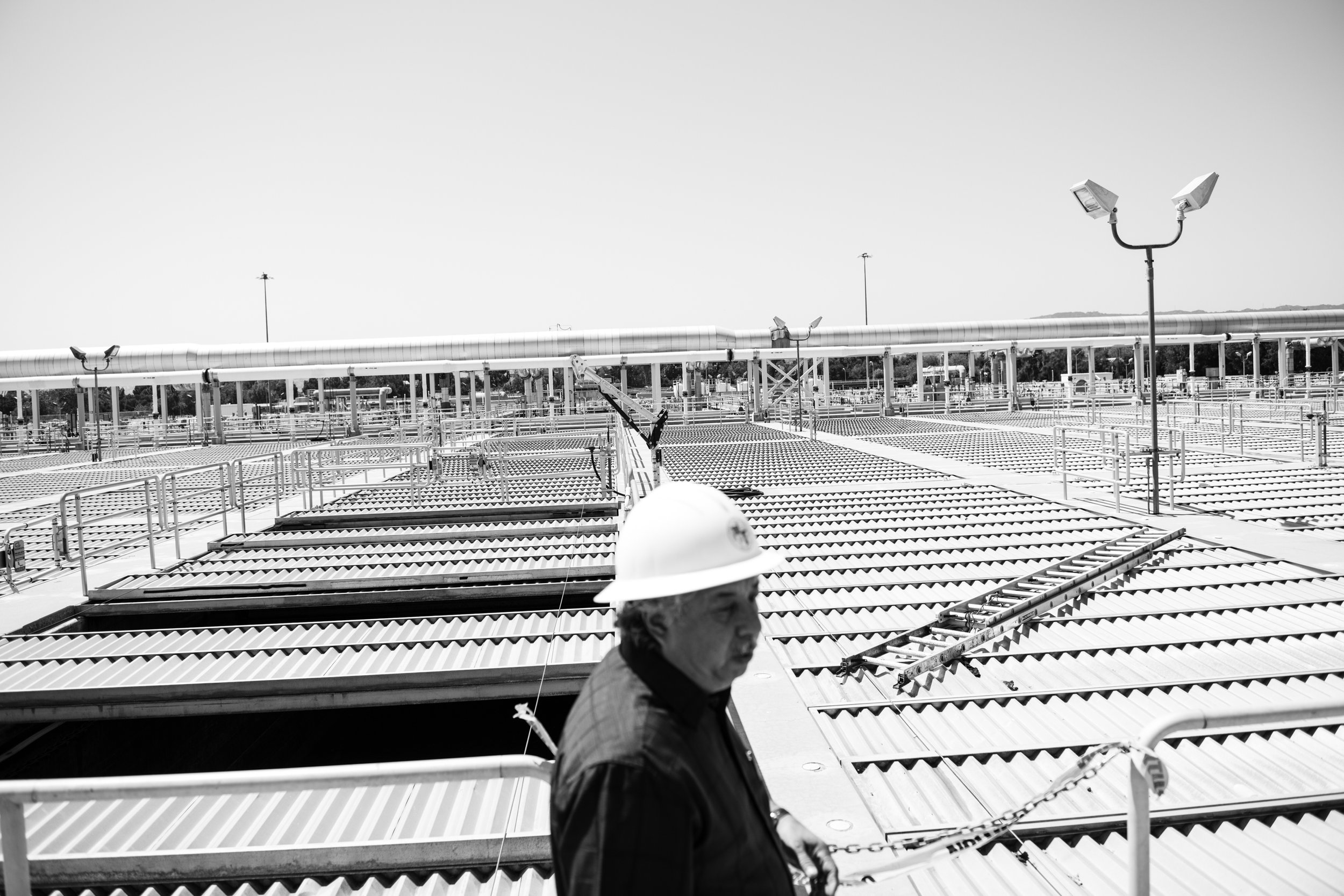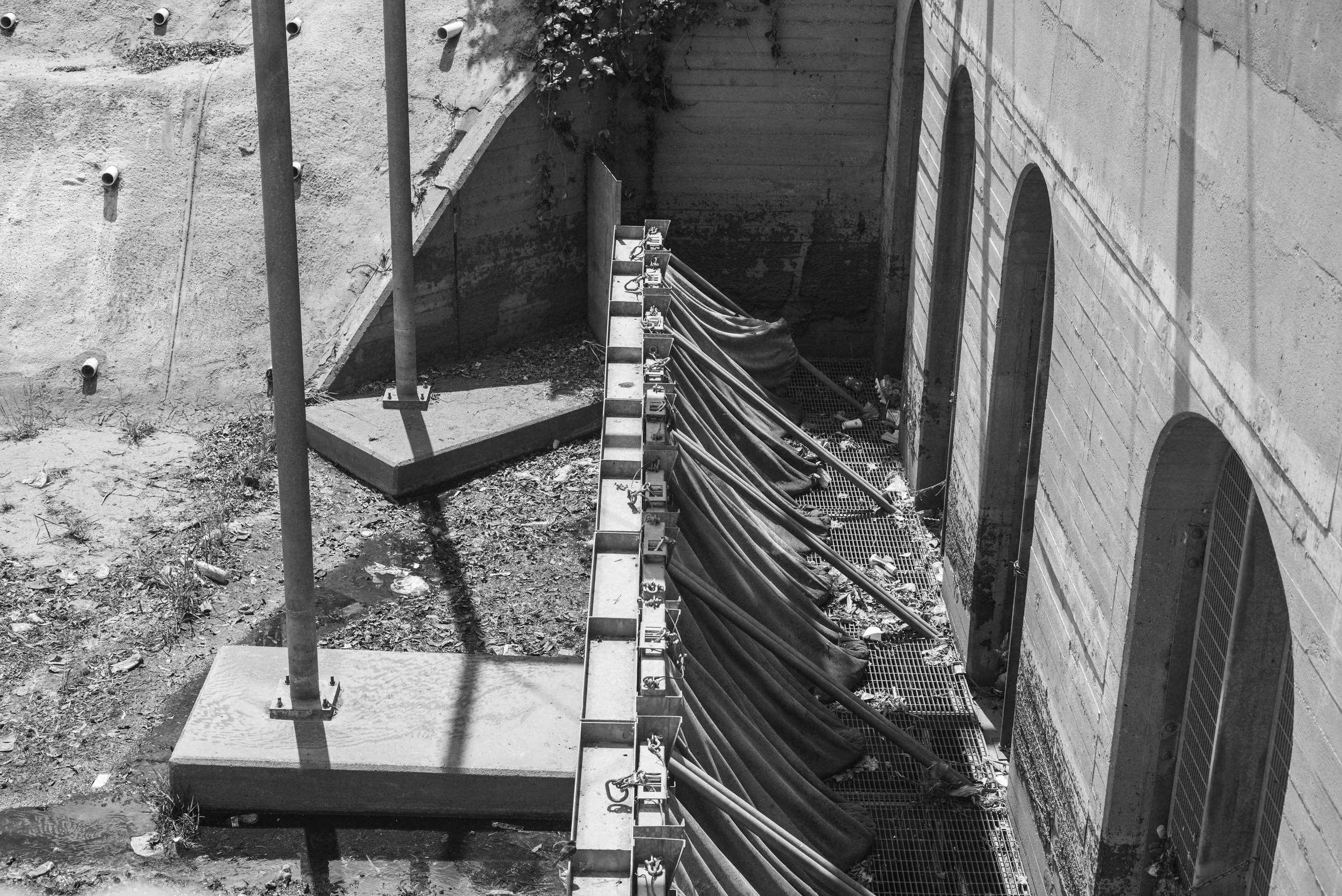A dead bird lies on the slanted pavement, its neck twisted in the shape of an ‘S’. In the distance, a lone man makes his way across a slippery concrete riverbed, now coated in algae. Occasionally, a piece of trash floats downstream, slowly advancing toward the Pacific. A pair of Canada geese pick through the trash, looking for food. On both sides, the riverbed is guarded by a steep, slanted slope.
This is the tail end of the Los Angeles River, a waterway at risk.
From its source in the Santa Susana Mountains to its union with the sea at Long Beach, the river snakes through 17 different cities in a journey of just 51 miles. But even within that short course, there are perils.
Today, the L.A. River is at a pivot point. Development, pollution, and poor management are significant threats to the river’s health. Earlier this year the environmental group American Rivers ranked the L.A. River as the 9th most endangered river in the country.
In its recent history, the river has been abused by its urban setting, channelized and tainted with industrial runoff. But along its northern reaches, a restoration is taking shape.
The L.A. River Master Plan, which aims to improve the profile of the river over the next 25 years, was approved by Los Angeles County officials in May. The plan seeks to renovate around river-adjacent communities that have historically been harmed by racial, environmental, and institutional injustices. These communities are also some of Southern California’s poorest and most polluted.
Environmentalists, however, have voiced their concern over certain elements in the Master Plan. In addition to reservations about how water recycling goals will be implemented, they object to expanded hardscapes. Since the late 1930s, nearly 3.5 million barrels of concrete have transformed the river into a flood control channel. The Master Plan would use more concrete in the vicinity of communities that are already impacted by industrial pollution and climate-related issues such as extreme heat and less rain.
For four months in the spring and summer of 2022, I documented the L.A. River and Angelenos who use the river as characters in the widening and complex story of climate change and how our access to clean water is at a critical and fragile crossroads.
The people who allowed me to document their lives along the L.A. River also illustrate the universal relationship that we share with water.
This is the state of one of Los Angeles’s most prized and historical symbols, an enduring source of life for the region’s environment, culture, and people.
(Originally published in collaboration with Circle of Blue, Summer 2022)
Story Collaborations



































